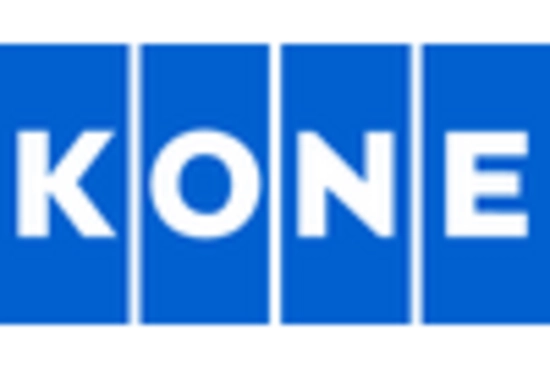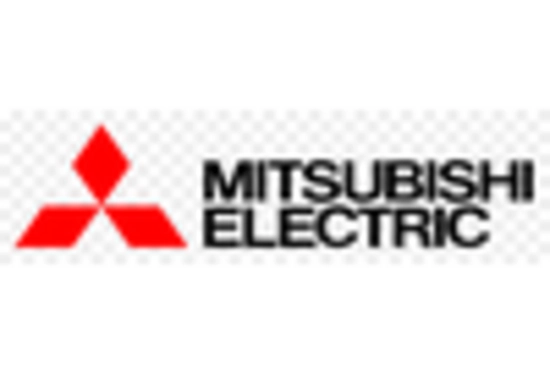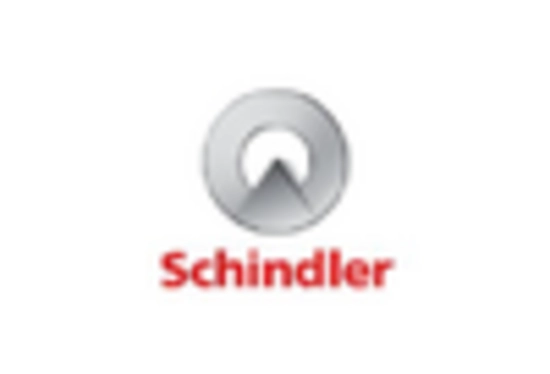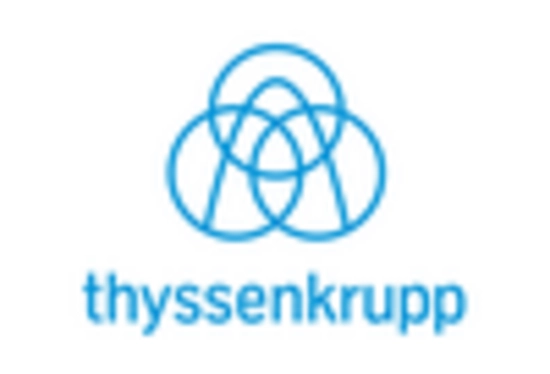The Moving Walkway Market is currently characterized by a dynamic competitive landscape, driven by increasing urbanization, the need for efficient transportation solutions in high-traffic areas, and a growing emphasis on sustainability. Key players such as Otis Elevator Company (US), Thyssenkrupp AG (DE), and Kone Corporation (FI) are strategically positioned to leverage these trends. Otis Elevator Company (US) focuses on innovation and digital transformation, enhancing its product offerings with smart technology. Thyssenkrupp AG (DE) emphasizes regional expansion and partnerships, particularly in emerging markets, while Kone Corporation (FI) is committed to sustainability and energy-efficient solutions, which are becoming increasingly important in the global market. Collectively, these strategies shape a competitive environment that is both collaborative and competitive, as companies seek to differentiate themselves through technological advancements and customer-centric solutions.
In terms of business tactics, companies are increasingly localizing manufacturing to reduce costs and optimize supply chains. The Moving Walkway Market appears to be moderately fragmented, with several key players holding substantial market shares. This fragmentation allows for a variety of competitive strategies, as companies can tailor their approaches to specific regional demands while also competing on innovation and service quality. The collective influence of these key players is significant, as they set industry standards and drive technological advancements that benefit the entire market.
In August 2025, Kone Corporation (FI) announced a partnership with a leading technology firm to develop AI-driven maintenance solutions for moving walkways. This strategic move is likely to enhance operational efficiency and reduce downtime, thereby improving customer satisfaction. By integrating AI into their maintenance processes, Kone Corporation (FI) positions itself as a leader in smart transportation solutions, which could potentially redefine service expectations in the industry.
In September 2025, Thyssenkrupp AG (DE) launched a new line of eco-friendly moving walkways designed to minimize energy consumption. This initiative aligns with the growing demand for sustainable infrastructure solutions and reflects the company's commitment to environmental responsibility. By prioritizing sustainability, Thyssenkrupp AG (DE) not only meets regulatory requirements but also appeals to environmentally conscious consumers, thereby enhancing its market position.
In July 2025, Otis Elevator Company (US) unveiled a new digital platform that allows for real-time monitoring and analytics of moving walkway performance. This platform is expected to provide customers with valuable insights into usage patterns and maintenance needs, thereby fostering a proactive approach to service. By investing in digital solutions, Otis Elevator Company (US) demonstrates its commitment to innovation and customer service, which are critical in maintaining a competitive edge in the market.
As of October 2025, the Moving Walkway Market is witnessing trends that emphasize digitalization, sustainability, and the integration of advanced technologies such as AI. Strategic alliances are increasingly shaping the competitive landscape, as companies collaborate to enhance their technological capabilities and market reach. Looking ahead, competitive differentiation is likely to evolve from traditional price-based competition to a focus on innovation, technology integration, and supply chain reliability. This shift underscores the importance of adaptability and forward-thinking strategies in navigating the complexities of the modern market.

















Leave a Comment